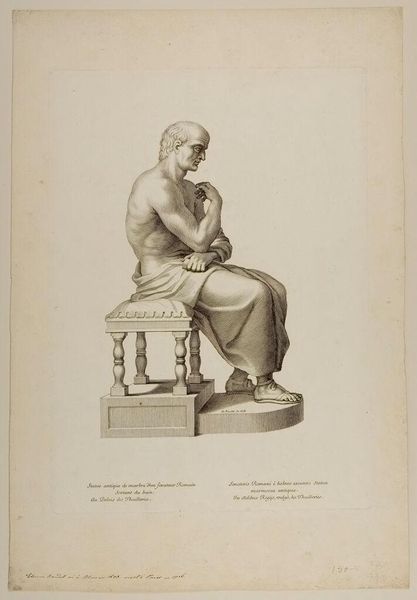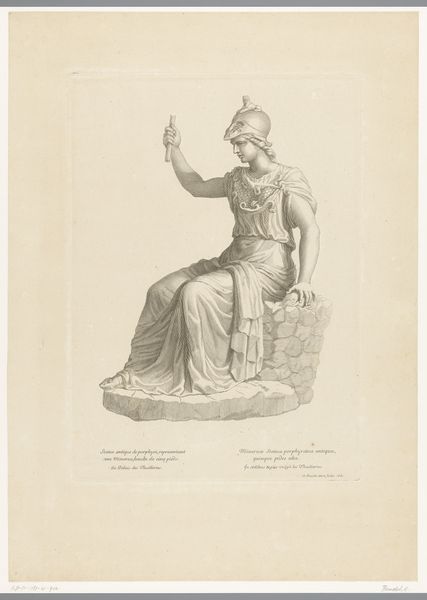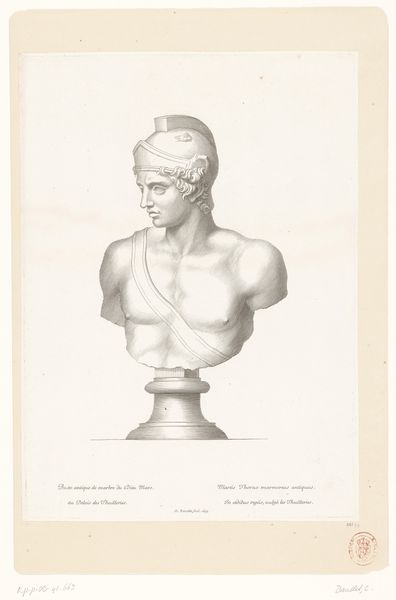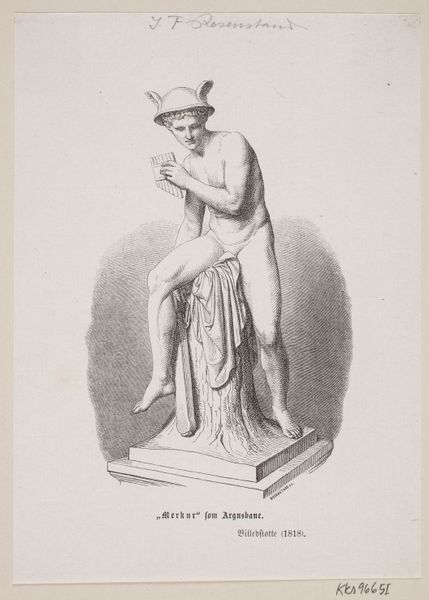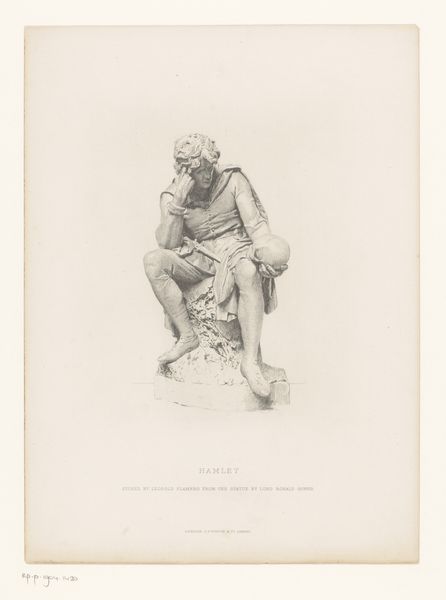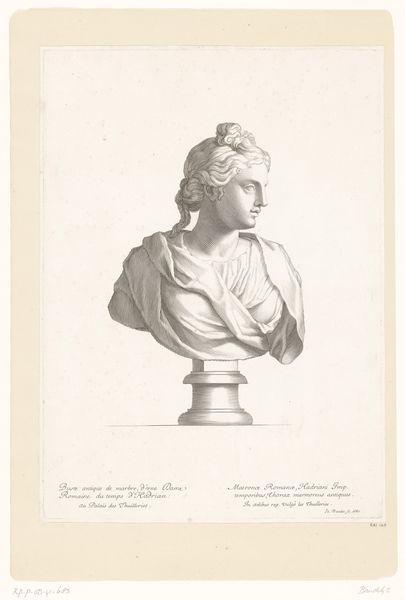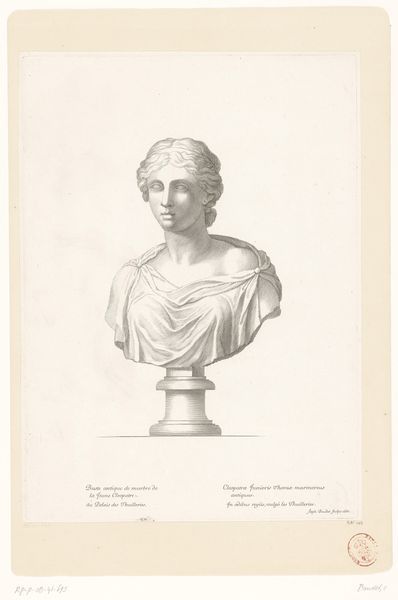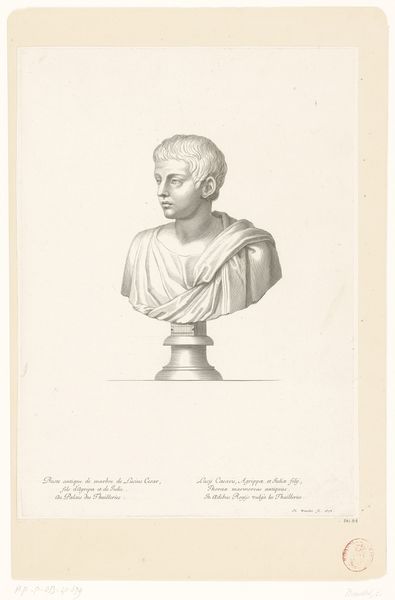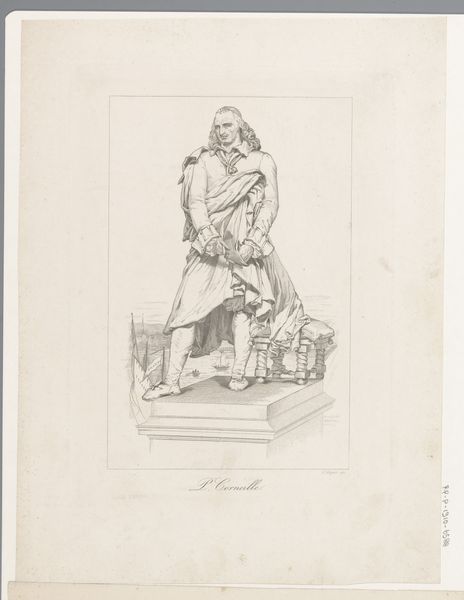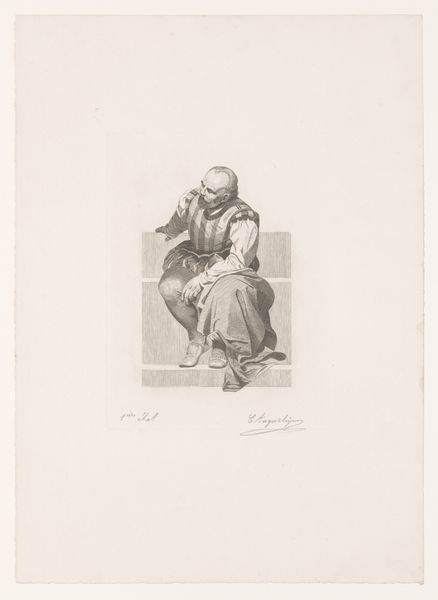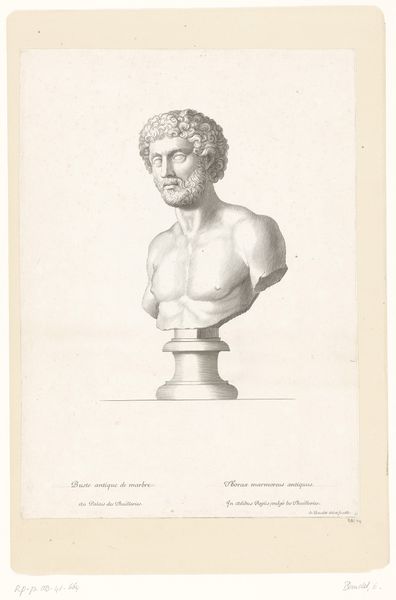
print, engraving
#
portrait
#
aged paper
#
baroque
# print
#
old engraving style
#
figuration
#
personal sketchbook
#
classicism
#
ancient-mediterranean
#
history-painting
#
engraving
Dimensions: height 390 mm, width 280 mm
Copyright: Rijks Museum: Open Domain
Editor: This is "Antiek standbeeld van Romeins senator na het baden," or Antique statue of a Roman senator after bathing, by Etienne Baudet, from 1678. It's an engraving, giving it a somewhat classical feel. What's your take on this particular print? Curator: As a materialist, I find the engraving process itself fascinating. The lines etched into the plate, the labor involved in creating multiple impressions – each of these carries meaning. This image depicts an elite figure, yet the means of production involve skilled labor, a kind of collaboration across social classes, wouldn't you say? Editor: That's an interesting perspective! I hadn’t really considered that aspect of it. I was more focused on the senator's pose and what that could say about power or contemplation. Curator: And isn’t the contrast interesting? An idealized image of Roman authority is mediated by the material realities of 17th-century printmaking. Think about the paper itself, the ink – commodities in their own right, circulating within specific economic systems. It makes you wonder about the intended audience, the market for such images. Were they catering to a noble or scholarly class? Editor: Now that you point it out, seeing the engraving as a commodity of sorts adds a whole new layer. It's not just a portrait; it's an object with its own history and context. What about the classical revival style, does that reflect some particular labour or production context? Curator: The deliberate revival is produced by an aspiration to restore this visual production practice. Classicism, through its formal clarity, also embodies values regarding labor and order which can speak to particular consumers. Editor: I’ve definitely learned to think about the artwork beyond just its aesthetic qualities and dive deeper into the processes that went into creating it. Curator: Exactly! It’s the material conditions that ultimately shape the image, influencing our understanding of history, power, and artistic value.
Comments
No comments
Be the first to comment and join the conversation on the ultimate creative platform.
